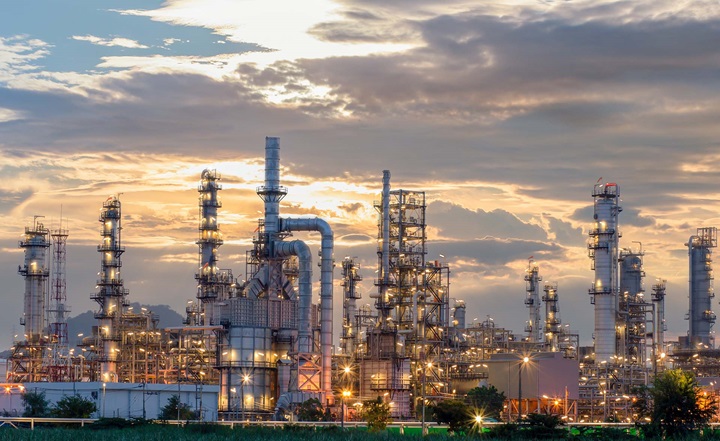- Low-CAPEX, low-OPEX
- Higher throughput and increased yield
- Lowered hydrogen consumption
- Superior operational stability
- Extended catalyst life
- Suitable for grassroots or revamp units
BioFlux® Renewable Diesel and Sustainable Aviation Fuel Technology
Versatile Hydrotreating Process
The BioFlux® Hydrotreating Unit has been designed to overcome the deficiencies of a trickle-bed design by completely dissolving hydrogen into the liquid. High liquid mass flux is maximized in the reactor, and the proprietary reactor internals ensure complete mixing of feed and hydrogen for even distribution across the catalyst. In the first stage, triglycerides and lipid-based feeds are reacted with hydrogen to remove oxygen and saturate olefins, which generates a diesel-range hydrocarbon product. Water, CO2, and other by-products are also generated. After by-product removal, a portion of the first reactor product is recycled and mixed with fresh feed. This recycled effluent provides three benefits: pre-heat to the fresh feed, which reduces the requirement for supplementary preheat; supply of additional hydrogen; and elimination of large gas recycle. Combined, these changes lead to a 25% reduction in CAPEX and a 25 – 50% reduction in OPEX.
Yield of diesel from BioFlux® is approximately 95-99wt%. On a volume basis, it is nearly an even ratio, i.e., one barrel of renewable diesel can be produced from each barrel of feed, which meets or exceeds relevant standards, such as ASTM D975 (US), EN590 and EN15940 (Euro). Renewable naphtha, sustainable aviation fuel, or bio-propane can also be collected as saleable product from a BioFlux® unit.
BioFlux is offered by Sulzer GTC in cooperation with Duke Technologies.
Contact our team directly




